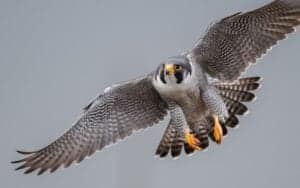Many birds feature red plumage. Some have red feathers in their wings or tail, while others have a red breast. Other birds have red eyes or red feet. Some have a cap of red, a streak of red, or a spot of red on their head. In some of these vibrantly colored birds, the red spills down to cover the back like a cape. And a handful of birds are red all over! As for this list, we cover birds with entirely red heads.
1. Australian Brush Turkey

One of the larger of the birds with red heads, the Australian brush turkey isn’t related to the North American turkey.
©Russ Jenkins/Shutterstock.com
The reason why this bird’s head is red isn’t due to brightly shaded feathers. It’s because its head is naked, and its bare skin is red. This large bird, Alectura lathami, isn’t related to the wild turkey found in America. They are an entirely different genus.
The Australian brush turkey is a large bird that’s about 23.5 to 29.5 inches long with a 33-inch wingspan. Besides its red head, it has a black body with a white belly. Its tail is large, shaped like a fan, and flattened laterally like the tail of a chicken. Males bear wattles that become more prominent during the breeding season. Like the chicken, the Australian brush turkey is a clumsy flier. It will only fly to gain a roost in a tree for the night or to escape a predator.
The male brush turkeys build huge ground nests that can be close to 5 feet high and 14 feet across. Females come to the nest to lay their eggs communally. Eventually, as many as 50 eggs can be deposited in one nest.
The Bush Turkey’s Delightfully Weird Reproductive Strategy
The parents don’t incubate the eggs, but the eggs are kept warm from the heat of the decomposing vegetation that make up the nest. The male makes sure the temperature’s right by sticking his beak into the mound and adding or subtracting material to make sure it stays between 91- and 95-degrees Fahrenheit. Amazingly, the sex of the chicks is determined by the temperature of the nest, something that happens fairly frequently with reptiles but not birds. An equal number of males and females are born when the temperature is maintained at 93.2 degrees F. If it’s cooler, more males are born. If it’s warmer, more females are born.
The chicks need to dig themselves out of the nest after they hatch. They already have their flight feathers and when the feathers dry, they’re ready to fly. The conservation status of the Australian brush turkey is least concern.
2. Turkey Vulture
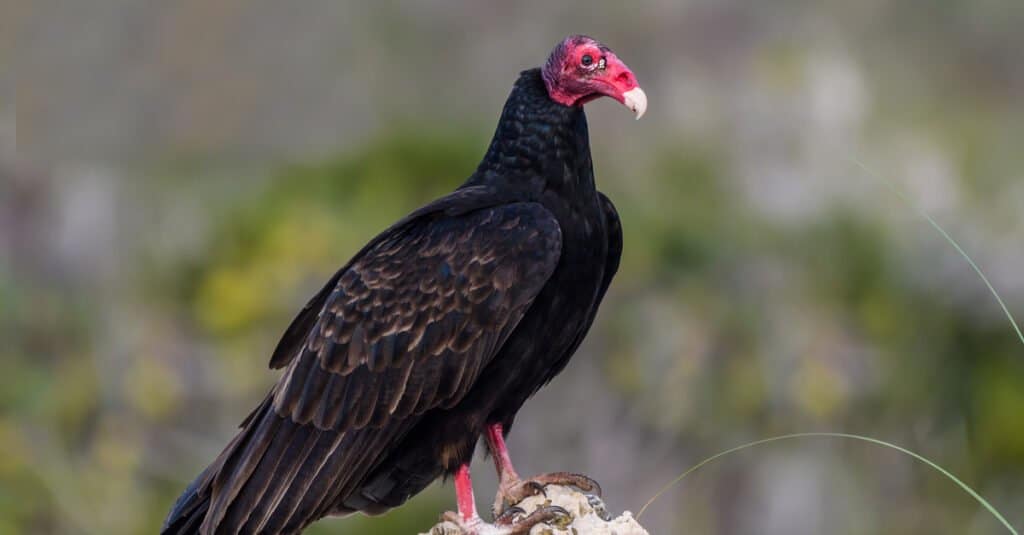
The naked red head of the turkey vulture keeps its feathers from being soiled when it tears into a carcass.
©FotoRequest/Shutterstock.com
This vulture’s head is red for the same reason the Australian brush turkey features a red head. It’s naked! However, in the case of the turkey vulture, the head is naked for an interesting reason: so that the feathers won’t be fouled when the carrion-eating bird sticks its head into a carcass. It is a wide-ranging vulture, and you’ll find it from Southern Canada to the very ends of South America. The turkey vulture’s scientific name is Cathartes aura, and it has five subspecies.
- C. aura aura
- C. aura jota
- C. aura meridionalis
- C. aura ruficollis
- C. aura septentrionalis
The turkey vulture’s body is about 24 to 32 inches, and its feathers are mostly black. The vulture can have a wingspan of 63 to 72 inches, and these wings allow the vulture to soar and glide as it searches for and sniffs out a meal that’s just beginning to decompose. It is unusual for a bird to use its sense of smell to find food. Since other types of vultures, such as black vultures and condors, can’t smell carrion, they often follow the turkey vulture to a carcass. Who gets to eat first depends on the size of the vulture. The conservation status is least concern.
3. Red-Headed Barbet
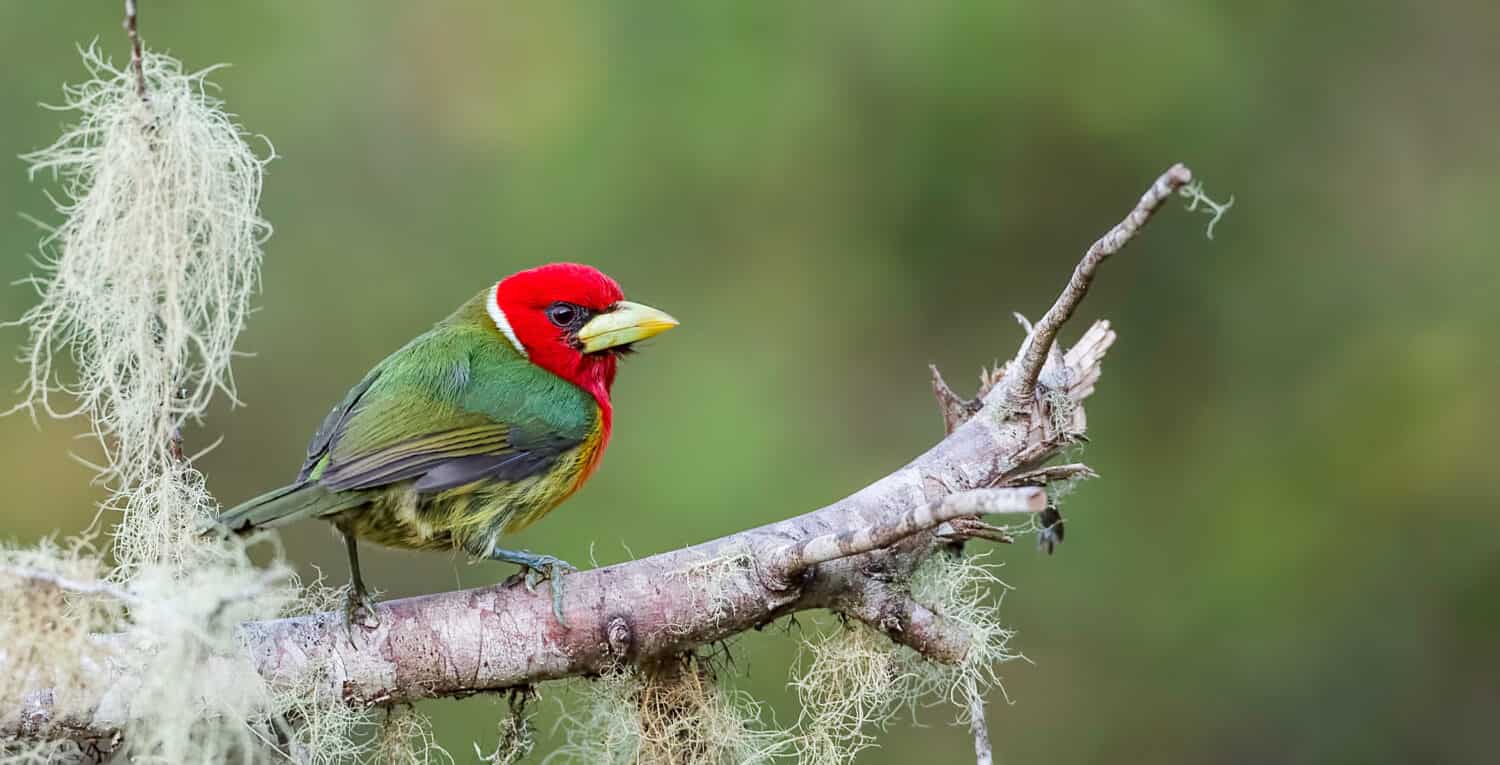
This little red head lives in Central and South America.
©Pascal De Munck/Shutterstock.com
This little bird who’s about 6 inches long and weighs a little over an ounce is found in Central America and northern South America. It’s the male barbet who has the red head, while the head of the female is green and yellow with a patch of blue. The male also has an orange or yellow breast, a green back separated from the red head by a white band, and a white belly. Eubucco bourcierii is found in the forests and builds nests in tree cavities, where the female lays between two and five eggs. She incubates them during the night, but both parents incubate the eggs during the day. The red-headed barbet’s conservation status is least concern.
There are six subspecies:
- E. bourcierii bourcierii
- E. bourcierii salvini
- E. bourcierii anomalus
- E. bourcierii occidentalis
- E. bourcierii aequatorialis
- E. bourcierii orientalis
4. Red-Capped Manakin
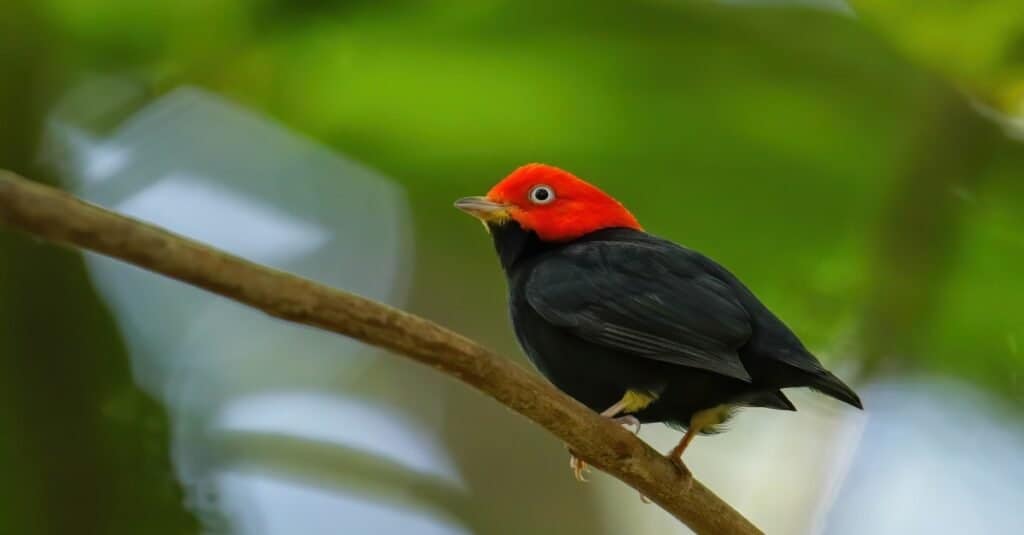
The little male red-capped manakin impresses a potential mate with his version of the moonwalk.
©Don Mammoser/Shutterstock.com
This little bird who lives in the tropical and subtropical forests of Central America is famous not just for its red head but for the dance the male performs during courtship. It’s described as a moonwalk!
This tiny bird is only about 4 inches long and weighs a little over a half an ounce. The male’s red head contrasts beautifully with its deep black plumage, yellow chin, yellow thigh feathers, and a rather striking white iris. The female is olive and a bit drab. The bird’s scientific name is Ceratopipra mentalis, and there are three subspecies:
- C. mentalis mentalis
- C. mentalis ignifera
- C. mentalis minor
The red-capped manakin’s conservation status is least concern.
5. Red-Headed Woodpecker
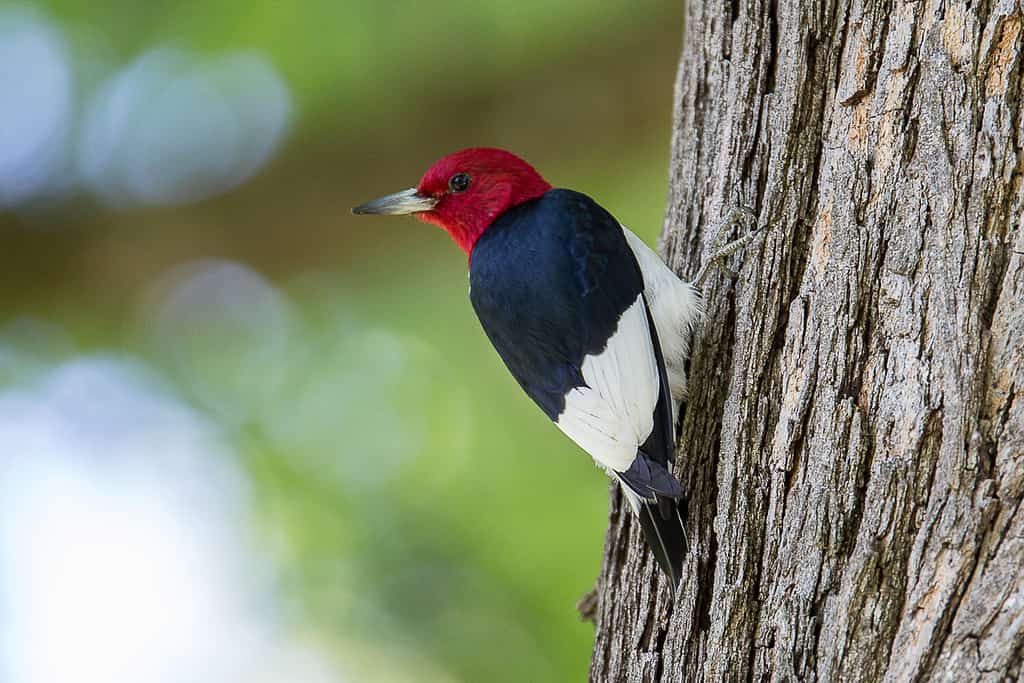
Both male and female members of this species have red heads.
©Benjamin King/Shutterstock.com
This medium-sized woodpecker is native to North America and lives in open habitats from the south of Canada to the midwestern United States. The bird is unmistakable for its head is an almost glossy, velvety scarlet. This contrasts with its black back, black tail, white belly, and black wings that are white underneath. The bird is between 7.5 and 9.8 inches long and has a nearly 17-inch wingspan. The red-headed woodpecker weighs from 2 to 3.4 ounces, and its beak is shaped like a chisel to make it easier to excavate nest cavities in trees. The bird prefers to build nests in dead trees, and the female lays between three and 10 eggs. The woodpecker’s breeding season lasts from April to July.
You’ll find the red-headed woodpecker at the edges of forests, in orchards, savannas, and even parks. They prefer any place that has a few big, tall, dead trees. The bird is an omnivore and eats insects and other invertebrates such as earthworms. It also eats acorns, seeds, and fruit. Now and then it will take a mouse and even steal the eggs and chicks of sparrows, chickadees, and bluebirds. Its conservation status is least concern, an improvement from 2018 when it was listed as near threatened.
6. Red-Crested Cardinal and Red-Cowled Cardinal

The red-crested cardinal lives in Brazil and is also called the Brazilian cardinal.
©რობერტ (Robert), CC BY-SA 3.0 <https://creativecommons.org/licenses/by-sa/3.0>, via Wikimedia Commons – Original / License
The red-crested cardinal, Paroaria coronata, only has red on its head and throat. This lovely bird belongs to the Thraupidae family and is actually a type of tanager.

The red-cowled cardinal is a close relative of the red-crested cardinal. Both are found in Brazil.
©Alexandr Junek Imaging/Shutterstock.com
The red-crested cardinal grows to be around 7.5 inches long, and males and females look alike. Like the red-headed woodpecker, it’s an omnivore and eats insects, seeds, and fruit.
This pretty bird is from South America and is mostly found in Brazil, though it’s been introduced to other places such as Puerto Rico. Its close relative is another of the birds with red heads, the red-cowled cardinal (P. dominicana), which is only found in Brazil. The conservation status of both birds is least concern.
7. Redhead
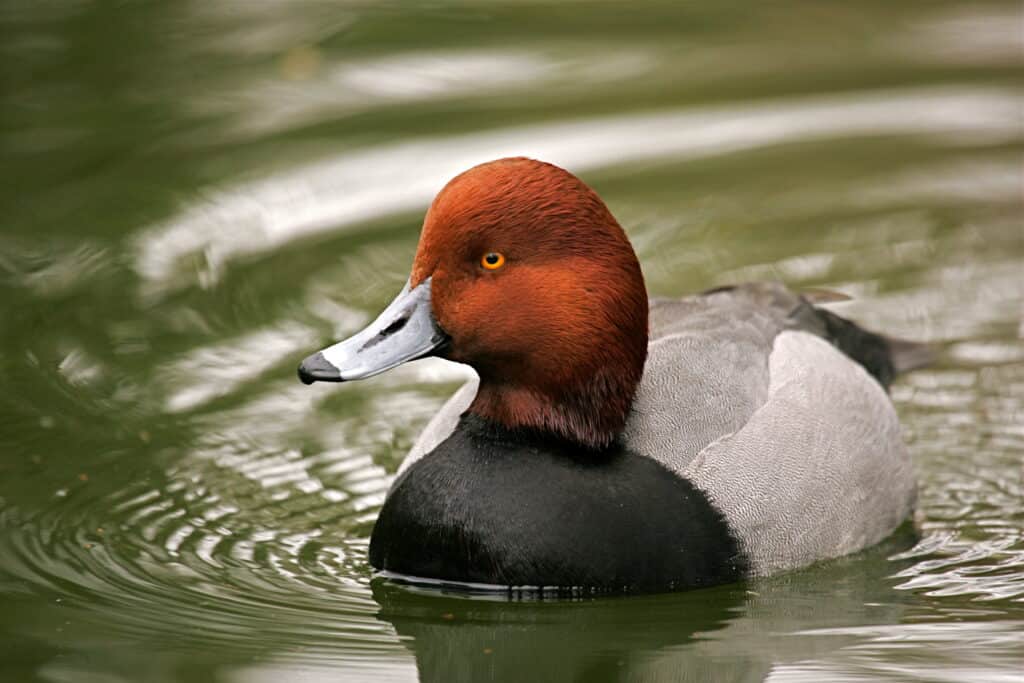
The male redhead gets his red head only during the mating season.
©Tom Reichner/Shutterstock.com
You’ll find this diving duck, Aythya americana, in wetlands in much of North America and in some places in the Caribbean such as Cuba. Only the males have the coppery or mahogany red head, and they only display it during the breeding season. Their bills also turn blue during the breeding season, which starts in late April and ends in early June.
The redhead is about 15 inches long, has a 33-inch wingspan, and weighs between 2 and 2.5 pounds. The females are a little smaller than the males. This duck is built to dive underwater to look for food. To this end, they’ve evolved legs that are further back on their body, alongside large webs on their feet and a lobed hind toe. Their bills are wider than the bills of other ducks, making it easier to forage for aquatic plants and animals. Unfortunately, the placement of their legs makes walking on land difficult for redhead ducks.
Redheads build their nests out of tough plant material near water. They are lackadaisical about defending their territory, and it’s not unheard of for females to lay their eggs in another female’s nest. A female redhead lays about 13 eggs in a season. The male plays no part in raising the chicks, and the mother abandons them when they’re about two months old, well before they’re able to fly.
Their diet depends on the season. When they’re breeding, they need animal protein and eat snails and mollusks. When they fly south for the winter, they eat aquatic or semi-aquatic plants such as widgeon grass. The conservation status of the redhead is least concern.
Thank you for reading! Have some feedback for us? Contact the AZ Animals editorial team.






